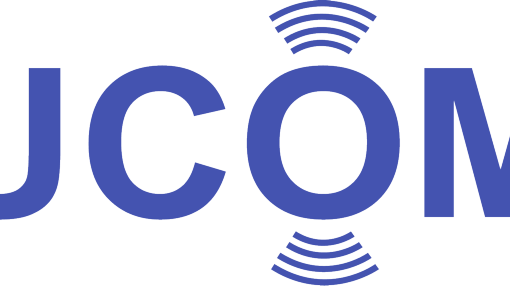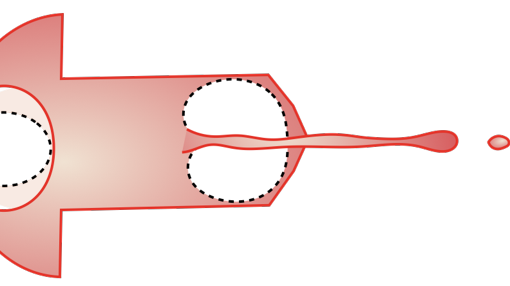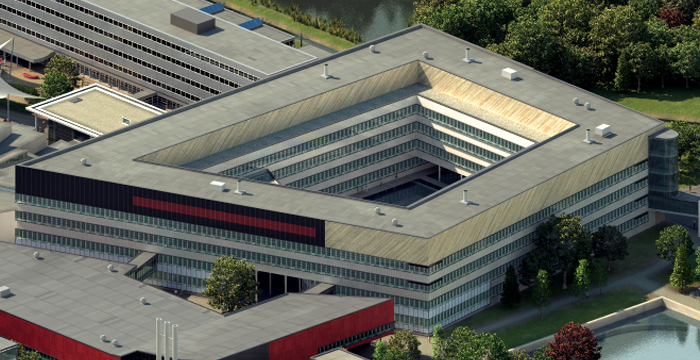'Featured Scientists' page, click below:
Please, take a look at my personal webpage: www.david-fernandez-rivas.com
I enjoy scientific research and ensuring its deployment into society on three topics: cavitation, renewable energy, and process intensification through microfluidics. Besides teaching and performing academic activities, I am a strong promotor of valorization and commercialization. I have controlled and utilized cavitation, or the appearance and collapse of bubbles with acoustics, electrochemistry, and microfluidics, for industrial applications such as water remediation, and materials modification.
Since 2014, I have focused on biomedical projects, such as improving diagnostics of chronic obstructive pulmonary diseases, with bubble acoustic excitation in bio-fluids such as sputum: Rapid microsensor to diagnose bacterial infection in COPD exacerbations.
My most ambitious research is the needle-free injection of fluids: www.bubble-gun.eu . I strive to reduce production and usage costs of this technology, improving its reliability, and make it accessible for developing countries and millions of people worldwide. This project has received funding from the European Research Council (ERC) under the European Union’s Horizon 2020 research and innovation programme (Grant agreement No. 851630).
My ultimate goal is to become an independent scientist, leading motivated professionals into exciting research at the interface of physics and biomedicine.
Affiliation to MIT since 2017: https://bioinstrumentation.mit.edu/people.html
Expertise
Physics
- Bubbles
- Liquids
- Cavitation Flow
- Injection
- Needles
- Collapse
Earth and Planetary Sciences
- Bubble
Engineering
- Microfluidics
Organisations
Ancillary activities
- Massachusetts Institute of Technology, MIT, USAResearch Affiliate MIT, USA
- BuBclean VoFCo-founder, I act mainly as advisor and providing a scientific angle.
- FlowBeams BVManager FlowBeams
- Several, Elsevier, AIPAdvisory for Editorial work of several Journals
I am interested in original and challenging applicable research; meaning that I want to achieve scientific results, apply them in the most efficient way, and ensure its deployment into society in the shortest time feasible.
My research focus is on two themes: BioEngineering and Greentech
Why bubbles? Cavitation - appearance and collapse of bubbles- can provide novel ways to purify water, modify materials, the creation of jets for medical applications, and many others. Nevertheless, the presence of a bubble is often seen as a negative event by the majority of scientists. This notoriousness comes from the difficulties in controlling bubbles, and because the utilization of their effects is not an easy task. If we are to control and utilize cavitation for societally relevant applications, first there are scientific questions that need to be addressed. We therefore need to develop techniques and engineering systems to do it efficiently exploit bubbles.
Publications
Jump to: 2026 | 2025 | 2024 | 2023
2026
2025
2024
2023
Research profiles
I see myself as a knowledge transfer agent between generations of professionals and the public in general. Continuous education is part of my lifelong learning plan, increasing my adaptability and personal development. My interest is to sharpen existing, or developing new skills such as critical thinking, creativity, and communication. These skills, transferred to my students and collaborators, will help us keep ahead of developments around us, in a constantly changing world.
Affiliated study programs
Courses academic year 2025/2026
Courses in the current academic year are added at the moment they are finalised in the Osiris system. Therefore it is possible that the list is not yet complete for the whole academic year.
- 193780000 - CS Mesoscale Chemical Systems
- 193799700 - CR Assignment (Studytrip)
- 201300054 - MSc Final Project SRA
- 201300055 - MSc Final Project RGA
- 201800413 - MSc Final Project SRA
- 201900212 - Additional Intern. & Job Orient. Project
- 201900214 - Internship & Job Orientation Pr. CSE/AP
- 201900284 - Placement Course for Exchange Students
- 201900316 - MSc Assignment AP/CSE Scientific Aspects
- 201900317 - MSc Assignment AP/CSE General Aspects
- 202000001 - Innovation Project 1
- 202000002 - Innovation Project 2
- 202300205 - Entrepreneurial Toolbox for Engineers
- 202300227 - Prep. MSc Assignment CSE/Parma 2.5 EC
- 202300228 - Prep. MSc Assignment CSE/Parma 5 EC
- 202300330 - Multidisciplinary Project CSE
- 202500308 - MSc Final Project RGA
Courses academic year 2024/2025
- 193780000 - CS Mesoscale Chemical Systems
- 193799700 - CR Assignment (Studytrip)
- 201300054 - MSc Final Project SRA
- 201300055 - MSc Final Project RGA
- 201800413 - MSc Final Project SRA
- 201900212 - Additional Intern. & Job Orient. Project
- 201900214 - Internship & Job Orientation Pr. CSE/AP
- 201900281 - Ethical and Cultural Awareness
- 201900284 - Placement Course for Exchange Students
- 201900316 - MSc Assignment AP/CSE Scientific Aspects
- 201900317 - MSc Assignment AP/CSE General Aspects
- 202000001 - Innovation Project 1
- 202000002 - Innovation Project 2
- 202300205 - Entrepreneurial Toolbox for Engineers
- 202300227 - Prep. MSc Assignment CSE/Parma 2.5 EC
- 202300228 - Prep. MSc Assignment CSE/Parma 5 EC
- 202300330 - Multidisciplinary Project CSE
I try to keep updated my personal webpage, and here you can find the Research activities.
In times of lockdown (October 2020)
This was the work team, November 2017
Current projects

Surface manipulation and volume control of cavitation
Ultrasound Cavitation in sOft Materials UCOM. A European Union Horizon 2020 Research and Innovation Programme
(1) To develop an experiment for heterogeneous cavitation nucleation studies on various surface types at microscale level, examining micro-pit arrangements of various shapes and sizes, coatings etc.; (2) To investigate bubble nucleation and transport formed at these surfaces, under the influence of ultrasound excitation. To investigate free radical transport mechanisms using chemiluminescence (e.g. luminol light emission) and propose relevant models to be used in macroscopic simulations.

Continuous sensing and flow with bubbles
Storing electricity. Multiscale Catalytic Energy Conversion
he production of solar fuels, among which hydrogen gas, has gained much attention in the last decade. However, the promised ideal of powering disparate devices using sunlight with zero-emissions still faces scientific and technological challenges. Even with the recent development of new materials and device architectures, there is a knowledge gap that needs to be covered on the role of H2 (and O2) bubble generation and transport, specifically in continuous flow systems. To achieve an efficient fuel production, it is not sufficient to locally control where gas bubbles are formed in stationary conditions. Hence, this project is aimed at gaining new fundamental insight in two challenging directions: (i) the processes and parameters associated with hydrogen bubble generation and transport under continuous flow conditions in novel and smart electrode designs, (ii) uncover new analytical concepts to measure dynamic physicochemical changes in the vicinity of bubble evolution sites. Both challenges have in common an unprecedented temporal and spatial resolution that is in high demand for designing and testing the solar fuel generators of the future.

BuBble Gun - ERC Starting Grant
Penetrating microjets in soft substrates: towards controlled needle-free injections
BuBble Gun features a novel injection method using confined cavitation induced by continuous wave lasers, to create fast liquid jets that penetrate target substrates. The accurate delivery of volumes into complex substrates, e.g. human tissue, is limited by: the need to reach specific depths with energy efficient methods, the break-up of jets that impedes control over the delivered dose, and liquid splash-back after bouncing on the substrate that causes cross-contamination. The main objective of BuBble Gun is to gain new scientific knowledge to overcome these challenges. My overarching goal is to develop a clear picture of the energy partition initiated with the creation of bubbles, converted by the tuned rheology of jets, and ending with jet penetration into soft substrates. This fundamental knowledge will be applied to achieve a major breakthrough in liquid jet injection, by: i) Controlling cavitation within microfluidic confinement, ii) Tuning the rheology of jets emerging from confined cavitation, and iii) Deriving the relationships between fluid dynamics and material properties governing jet injection into complex soft substrates, in particular human skin. Ultra-high-speed imaging and advanced bioengineering techniques will allow studying phenomena below the microsecond and micrometer scales. Jets will be tuned with biocompatible additives to ensure cohesion, before injecting them in-vitro and ex-vivo skin. Numerical models will assist disentangling the influence of geometry and material properties. I expect to unveil new knowledge at the intersection of microfluidics, physics, and bioengineering, towards a new understanding of cavitation, jetting rheology, and injection phenomena. With this understanding, my team will develop a portable energy efficient platform for future innovations. For example, coating modifications and additive manufacturing, where jetting of a wide range of liquids is crucial, and particularly for needle-free drug delivery in medicine.
- How can you get an injection without a needle? Universiteit van Nederland
- De Ingenieur, interview Ik los graag praktische problemen op (in Dutch) “I like solving practical problems”, November 2020
- NPO Radio 1, interview (in Dutch) about the possibilities of injecting without needles, March 15th, 2020.
- RTL Nieuws Editie NL, TV interview (in Dutch) online text and video, March 12th, 2020.
- Volkskrant interview, about my research regarding needle-free technology; printed and online version (in Dutch) March 7th, 2020.
- Euraxes Interview, giving tips to researchers interested in applying for ERC grants. December 2nd, 2019.
- Ecco il tatuaggio senza aghi, indolore e inteligente, Galileo, Popular Science Italian website. June 11th, 2019.
- The Dutch radio station BNR Nieuws interviewed me on May 8th, 2019 about the Needle-free technology that I am developing (in Dutch) (https://www.bnr.nl/player/archief/20190507175010175)
- De Ingenieur, an article and interview were published in print and online version of this popular Dutch magazine (https://www.deingenieur.nl/artikel/spuitje-zonder-prik-hier-komt-de-naaldloze-injectie)
- Tubantia published one full page in the weekend special an interview about injection of insulin and tattooing without needles May 2019; Extra zonnebrand smeren of insuline spuiten? UT onderzoekt mogelijkheden tattoos, (https://www.tubantia.nl/enschede/extra-zonnebrand-smeren-of-insuline-spuiten-ut-onderzoekt-mogelijkheden-tattoos~abaa7ead/) (http://davidfr.ddns.net/wordpress/index.php/2019/05/23/local-newspaper-interview/)
- Optics.org provides daily coverage of the optics & photonics industry and the markets that it serves and wrote about my research https://optics.org/news/10/4/37.
- Our skin as a platform, interview published in U-Today, regarding an event I organised March 21st 2019 (https://www.utoday.nl/news/66710/our-skin-is-a-platform)
- The paper resulting from the Lorentz Center event I organized, Pathways to Solar Hydrogen Technologies, made it to the Energy and Environmental Science cover. (https://pubs.rsc.org/en/content/articlelanding/2018/ee/c8ee90055h/unauth#!divAbstract) https://www.lorentzcenter.nl/lc/web/2016/797/info.php3?wsid=797&venue=Oort
- Opening up a path for solar hydrogen, U-Today, October 2018 (https://www.utoday.nl/science/66117/opening-up-a-path-for-solar-hydrogen)
Rising Star, U-Today, September 2018.
Dutch KIJK magazine closes its voting and InkBeams is 1st Tech Idea of 2017
Spreading entrepreneurial ambitions from an academic perspective 2017
De ongekende kracht van belletjes. prof. Versluis shows BuBblebags 2017
Cuba and back again. MIRA, Biomedical Technology&Technical Medicine 2017
PIHC overview of Pioneers in Healthcare winners; MIRA, 2016
Winner of the StartUpLaunch weekend. October 18th, 2016
InkBeams wins first edition of The StartupLaunch, October 17th, 2016
InkBeams winnaar van StartupLaunch. Radio TVEnschedeFM. October 2016
Technisch Weekblad Medicijninjectie met 100 m/s article, June 3rd 2016
Boom’s lab catalog presenting the BuBble Bags. January 7th, 2016
CMM magazine, August 2015, BuBclean and ultrasonics for precision technology.
Make it in the Netherlands!2014-2015 Report
Veelbelovende techniek van startup InkBeams: naaldloos injecteren
NRC Next article on MESA+ cleanroom and BuBclean, September 2nd, 2015
Start-up opent nieuwe perspectieven voor ultrasoon reinigen. December, 2015.
Arago Focus: BuBclean, ultrasoon reinigen met microbelletjes. February, 2015.
Technisch Weekblad Technostarter: Ultrasoon reinigen kan beter, Dec 2014.
Holland Alumni testimonial Experiences as entrepreneur and immigrant, Dec. 2014.
Mikroniek: Removing additive contaminants, December 2014.
TV program “De Kennis van Nu” over de kracht van bellen.
Tubantia Ondernemer 2013Tubantia Ondernemer 2013.
News on utwente.nl
Address

University of Twente
Carré (building no. 15), room C1413
Hallenweg 23
7522 NH Enschede
Netherlands
University of Twente
Carré C1413
P.O. Box 217
7500 AE Enschede
Netherlands
